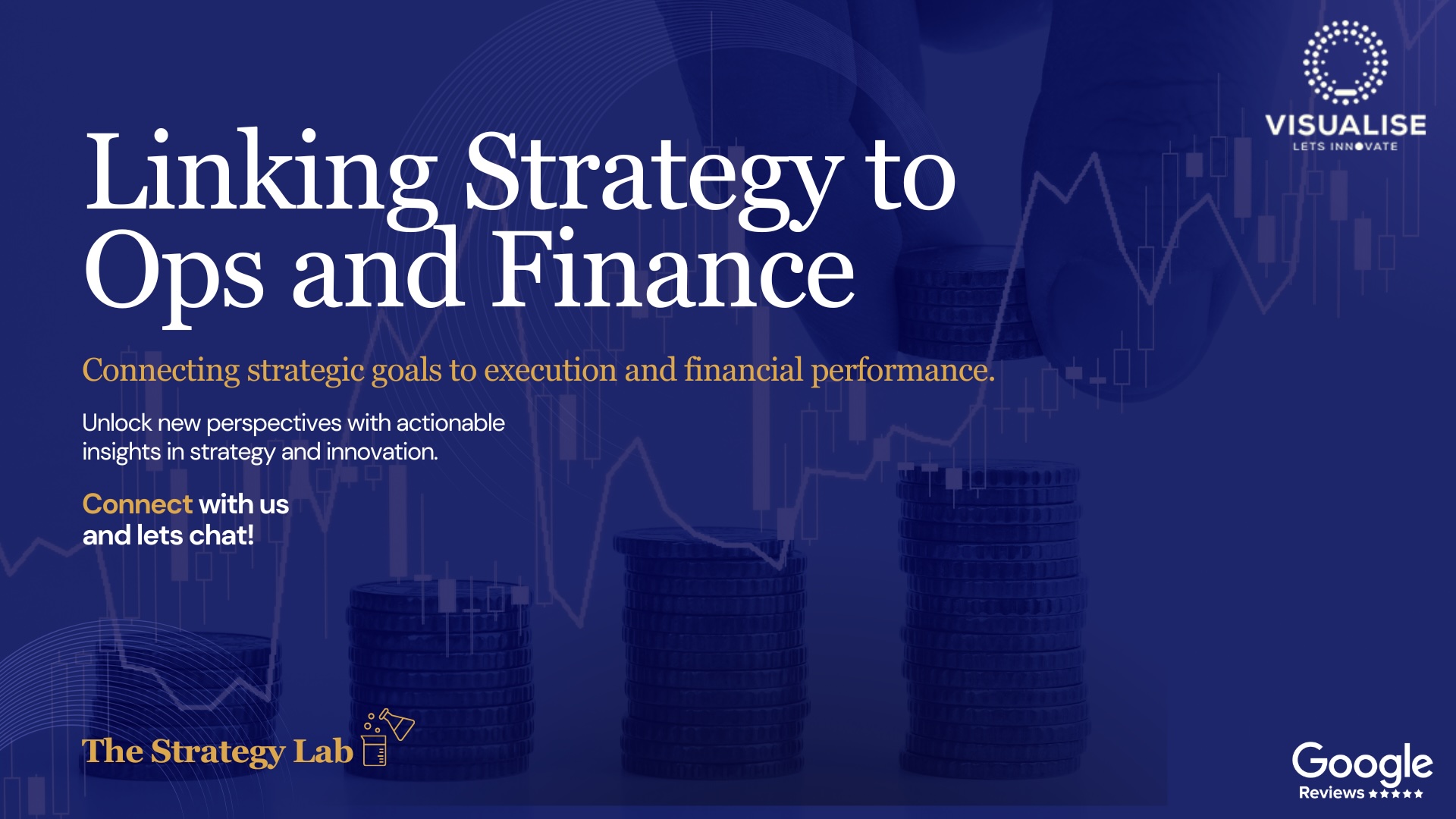Jun29

Effective execution of strategy goes beyond articulating a compelling vision or setting aspirational goals. It requires a disciplined framework that aligns strategic intent with day-to-day operations and financial planning. This article explores the critical linkages between strategy, operations, and finance, utilising tools such as the Balanced Scorecard (BSC), performance models, and initiative portfolio management.

To bridge the strategic-operational divide, organisations must translate high-level strategy into actionable objectives. An evolved Balanced Scorecard incorporates four key perspectives: Outcomes, Stakeholders, Processes, and Enablers. This holistic framework extends beyond traditional financial and customer lenses to include social impact and internal capability development.
Specific performance measures and targets underpin each strategic objective. For example, a profitability objective under the "Outcomes" perspective may correlate with operational metrics such as cost-to-serve and revenue growth. These indicators form the backbone of operational planning and financial forecasting.
Strategic themes and strategy maps bring coherence through cause-and-effect logic, guiding cross-functional alignment and ensuring teams understand how their actions contribute to broader goals.
Operationalising strategy involves integrating strategic objectives into the core planning cycle through:
Performance models serve as a structural blueprint, connecting strategic drivers to operational activities and clarifying how day-to-day performance contributes to strategic outcomes.
Tools like value trees and SIPOC diagrams are instrumental in translating strategic objectives into operational terms. A value tree, for instance, might deconstruct a goal such as "enhance customer satisfaction" into measurable drivers, like reduced wait times or improved service quality, each linked to specific processes and a corresponding financial impact.
Process improvement methodologies, such as Lean and Six Sigma, ensure that operational enhancements align with strategic KPIs, thereby embedding continuous improvement into the strategic fabric.
Strategic initiatives act as the transformation engine for executing vision. Portfolio management ensures initiatives are selected and prioritised based on:
Execution tools such as Gantt charts and performance dashboards track initiative progress, budgets, and outcomes, facilitating strategic and financial alignment.
Over time, successful initiatives transition into Business-as-Usual (BAU) operations, signalling that strategic intent has been operationalised.
Strategic execution is an iterative process requiring robust monitoring and learning cycles:
These reviews use RAG indicators, detailed objective pages, and performance narratives to surface issues early and drive corrective action. Scenario planning and war gaming further stress-test strategies for resilience.
Finance is integral to strategic execution. Budgets must reflect strategic priorities and include both costs and expected benefits of initiatives. Key financial linkages include:
Governance calendars synchronise strategic, operational, and financial activities, enabling investment decisions grounded in strategic value, not just cost.
For more on aligning business strategy with financial performance, visit Visualise Solutions.
Aligning strategy with operations and finance is a foundational capability for high-performing organisations. A systematic, repeatable approach ensures that strategic goals are embedded in operational tasks and financial plans. This alignment enhances adaptability, reinforces internal coherence, and ultimately drives sustainable growth in a complex business environment.
By Andrew Constable MBA, XPP, BSMP
Keywords: Business Strategy
 The Agentic Superiority of Gemini 3 Pro: Scale, Multimodality, and Ecosystem Integration
The Agentic Superiority of Gemini 3 Pro: Scale, Multimodality, and Ecosystem Integration Data Isn’t the Problem. Alignment Is.
Data Isn’t the Problem. Alignment Is. Friday’s Change Reflection Quote - Leadership of Change - Change Leaders Challenge Prevailing Assumptions
Friday’s Change Reflection Quote - Leadership of Change - Change Leaders Challenge Prevailing Assumptions The Corix Partners Friday Reading List - December 12, 2025
The Corix Partners Friday Reading List - December 12, 2025 Measuring the True ROI of Automated Claims Processes: Beyond Speed and Cost
Measuring the True ROI of Automated Claims Processes: Beyond Speed and Cost